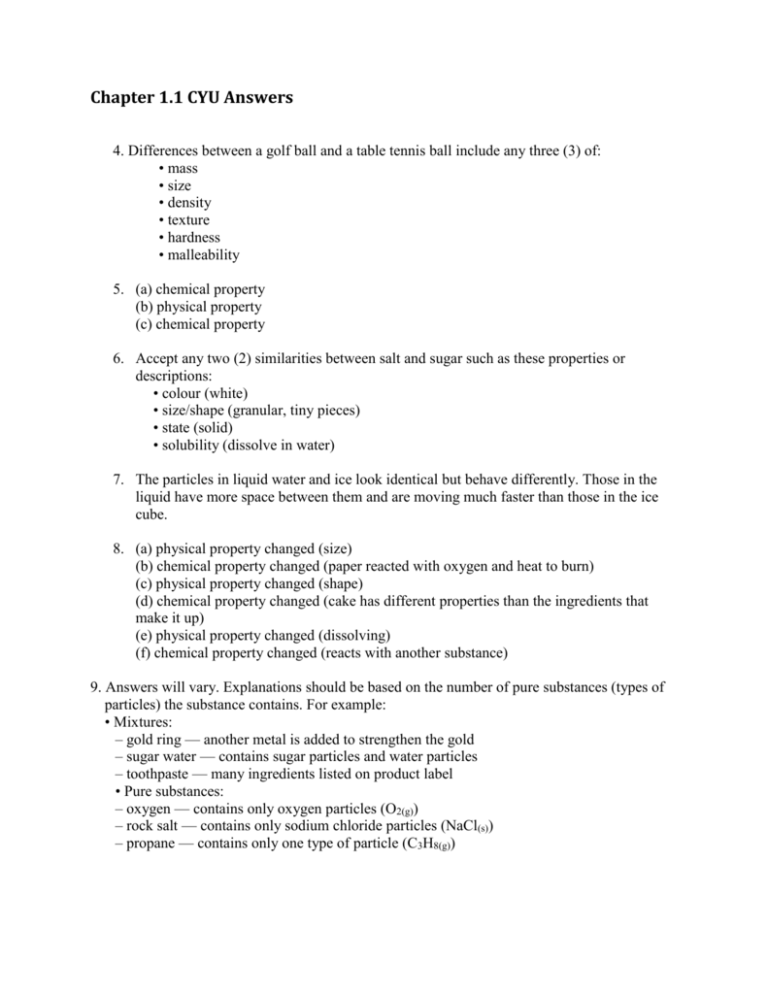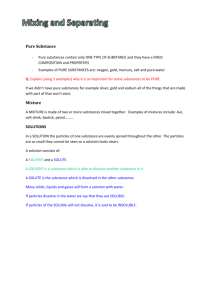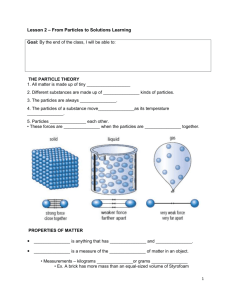Chapter 1 Review Answers
advertisement

Chapter 1.1 CYU Answers 4. Differences between a golf ball and a table tennis ball include any three (3) of: • mass • size • density • texture • hardness • malleability 5. (a) chemical property (b) physical property (c) chemical property 6. Accept any two (2) similarities between salt and sugar such as these properties or descriptions: • colour (white) • size/shape (granular, tiny pieces) • state (solid) • solubility (dissolve in water) 7. The particles in liquid water and ice look identical but behave differently. Those in the liquid have more space between them and are moving much faster than those in the ice cube. 8. (a) physical property changed (size) (b) chemical property changed (paper reacted with oxygen and heat to burn) (c) physical property changed (shape) (d) chemical property changed (cake has different properties than the ingredients that make it up) (e) physical property changed (dissolving) (f) chemical property changed (reacts with another substance) 9. Answers will vary. Explanations should be based on the number of pure substances (types of particles) the substance contains. For example: • Mixtures: – gold ring — another metal is added to strengthen the gold – sugar water — contains sugar particles and water particles – toothpaste — many ingredients listed on product label • Pure substances: – oxygen — contains only oxygen particles (O2(g)) – rock salt — contains only sodium chloride particles (NaCl(s)) – propane — contains only one type of particle (C3H8(g)) 10. Look for the following two (2) points: – Pure substances have one type of particle. Mixtures have more than one type of particle. – A mixture has different freezing point and boiling point than the pure substances that make it up. 11. Look for any three (3) of the following key points of the particle theory: • All matter is made up of very small particles. • All particles in a pure substance are the same. Different substances are made up of different kinds of particles. • There are spaces between particles. • Particles are always moving. As particles gain energy, they move faster. • The particles in a substance are attracted to each other.









